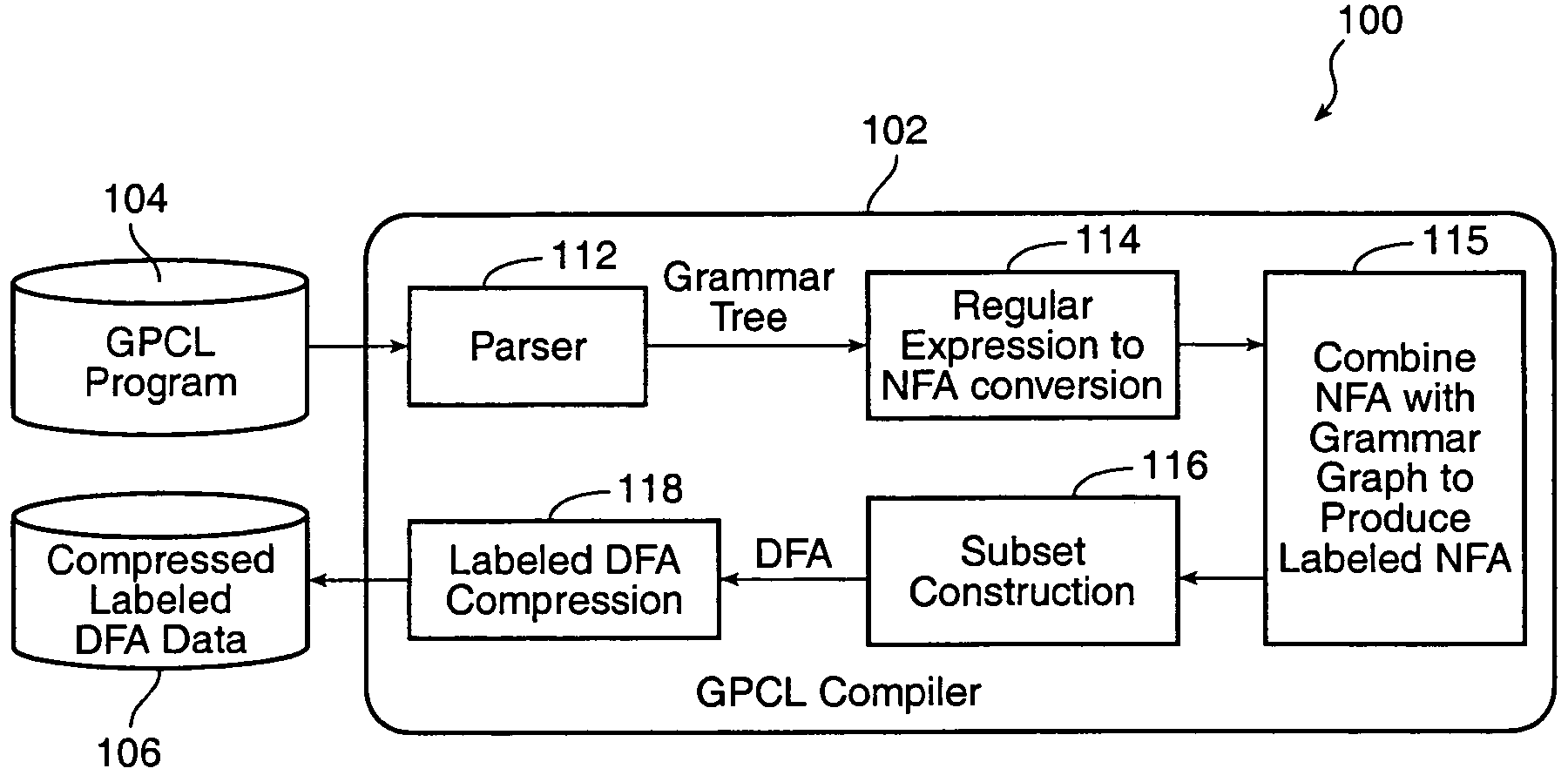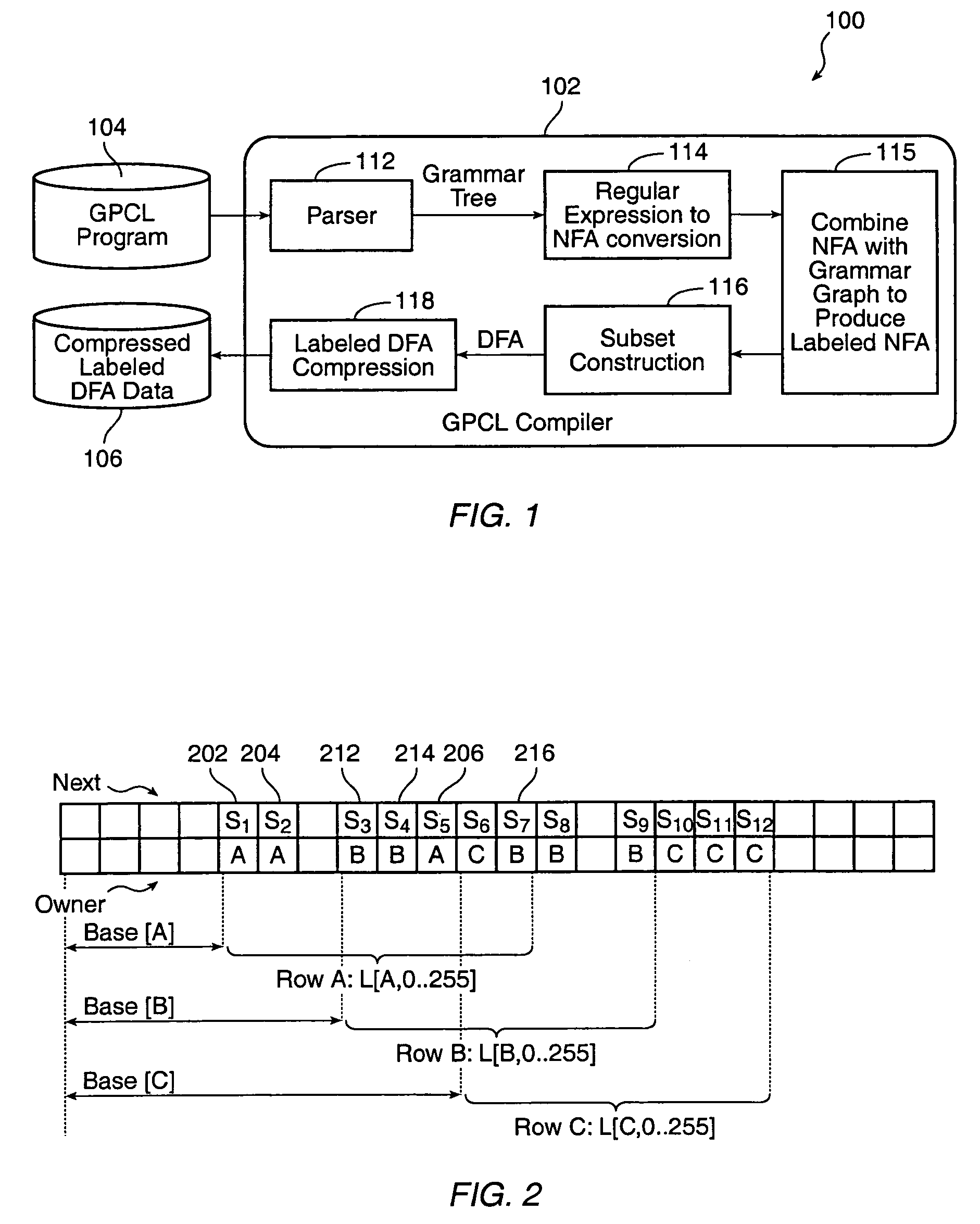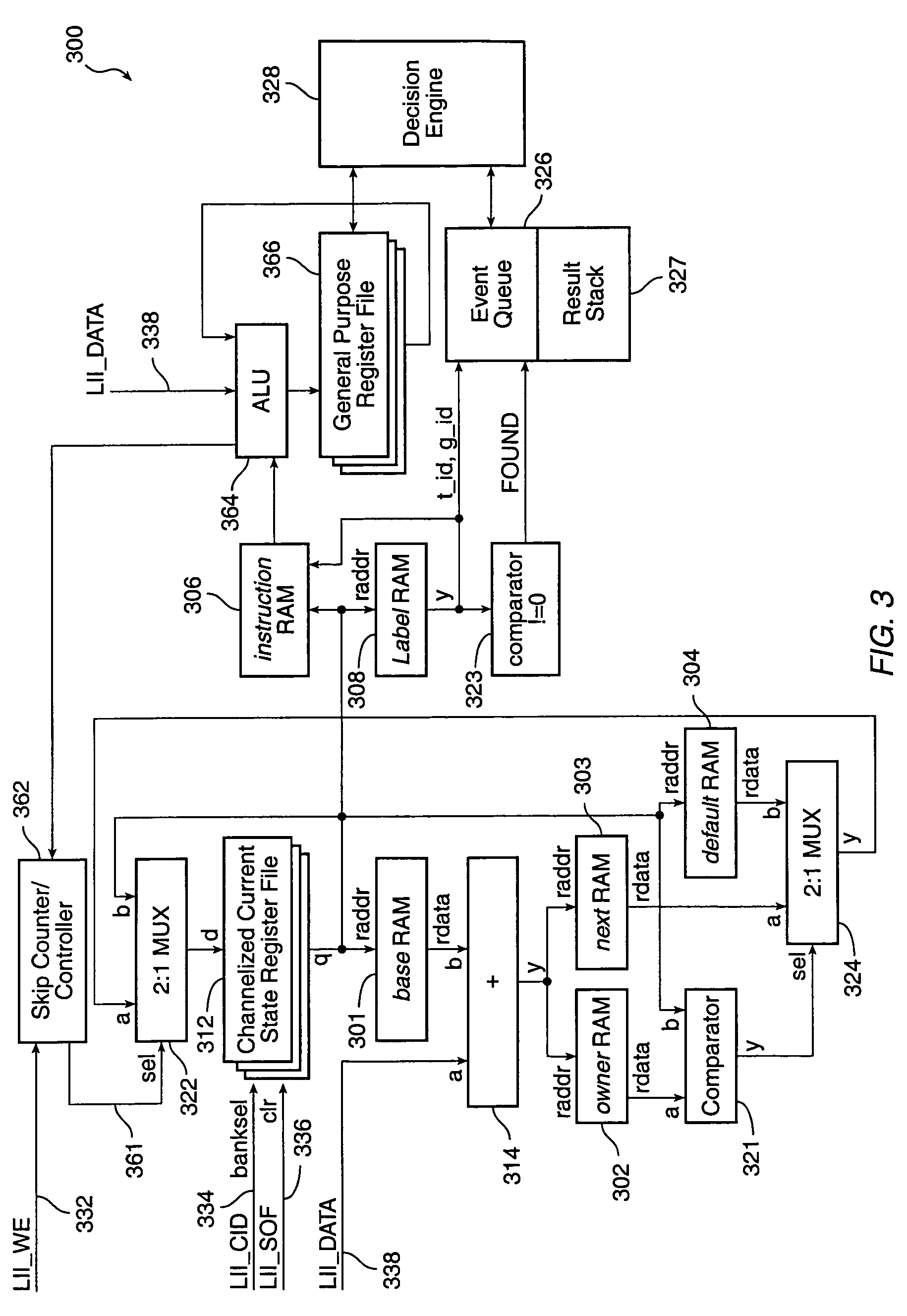Method and apparatus for grammatical packet classifier
a packet classification and grammatical technology, applied in the field of network data switches, can solve the problems of inability to handle a small number of simple classification rules, inability to customize, and inability to use the detector in a specific way, so as to simplify or replace the operation of the down-stream decision engine, simplify the definition of tokens, and simplify the effect of wire-speed processing
- Summary
- Abstract
- Description
- Claims
- Application Information
AI Technical Summary
Benefits of technology
Problems solved by technology
Method used
Image
Examples
Embodiment Construction
[0034]This invention uses a language compiler technique to analyze network data packets. The protocol structure and user policies are defined in lexical and grammatical rules in GPCL (Grammatical Packet Classification Language), a packet definition language according to the present invention. A compiler converts a GPCL “program” into data structures representing the policy set. The programmable hardware packet parser loads the compiled data structures into its internal RAM (random access memory). Input packet data feeds into the parser which is capable of parsing through the data to perform lexical and grammatical analysis in real time, at line rate.
[0035]The grammar supported by the GPCL is an LL(1) grammar; the first “L” is for left-to-right scanning of the input, the second “L” for producing a leftmost derivation, and the “1” for using one input symbol of look-ahead at each step to make parsing action decisions. Although an LL(1) grammar is weak for general language parsing, it i...
PUM
 Login to View More
Login to View More Abstract
Description
Claims
Application Information
 Login to View More
Login to View More - R&D
- Intellectual Property
- Life Sciences
- Materials
- Tech Scout
- Unparalleled Data Quality
- Higher Quality Content
- 60% Fewer Hallucinations
Browse by: Latest US Patents, China's latest patents, Technical Efficacy Thesaurus, Application Domain, Technology Topic, Popular Technical Reports.
© 2025 PatSnap. All rights reserved.Legal|Privacy policy|Modern Slavery Act Transparency Statement|Sitemap|About US| Contact US: help@patsnap.com



